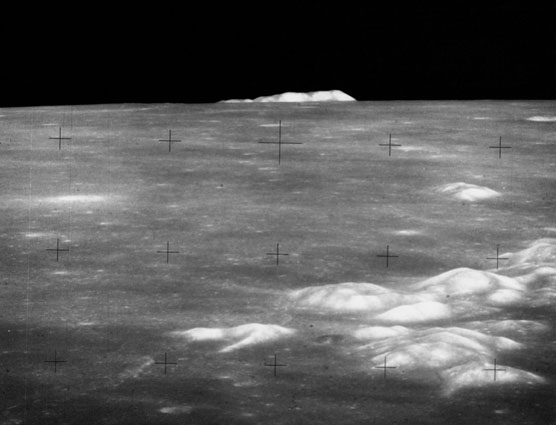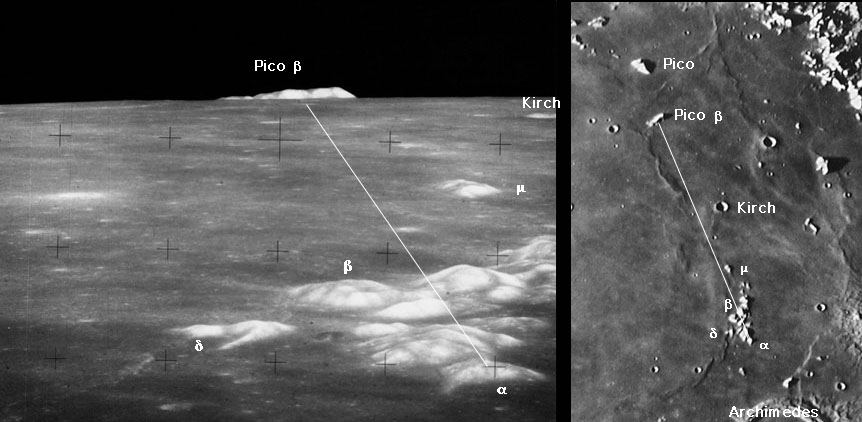Difference between revisions of "September 11, 2004"
m (→First on the Moon) |
|||
| Line 1: | Line 1: | ||
__NOTOC__ | __NOTOC__ | ||
| − | = | + | =A Steep Spot on the Moon= |
<!-- Start of content --> | <!-- Start of content --> | ||
<br> | <br> | ||
Latest revision as of 07:28, 14 September 2015
A Steep Spot on the Moon
Image Credit: Apollo 15 (AS15-81-11022) and CLA B14 |
|
A Steep Spot on the Moon Looking at even the best images from Earth or Lunar Orbiter we seldom get a feeling for the actual heights and slopes of lunar features. But while orbiting the Moon, Apollo astronauts used Hasselblad cameras to take some spectacular low oblique shots and even a few profiles. Here is one I stumbled on that provided some pleasant minutes as I tried to identify the peak on the horizon. The only catalog information was that this image is of the Spitzbergen Mountains north of Archimedes. Comparing this image with the Rukl Atlas sheet 12 didn't help, but when I compared it with a Lunar Orbiter IV image and then a Consolidated Lunar Atlas photo I could finally say, "Aha!" The Apollo 15 command module Casper was actually south of Archimedes when an astronaut (Mattingly?) took this shot looking north and a little west. In the foreground is the south half of the Spitzbergen Mountains. SInce most modern maps lack the Greek letter designations for topography I had to also pull out the System of Lunar Craters catalog and map (that I was a coauthor of 40 years ago!) to identify each peak. Drawing straight lines between two foreground landmarks and the 220 km distant peak (mouseover) I could finally identify it as Pico Beta. The larger peak Pico is not visible because it is directly behind Beta. According to the LAC 25 chart, Pico Beta is 2010 m high at its northeast end. Using my son's plastic compass I measure the slope on the right side as 31 degrees; the average slope of the rest of the peak, from the southwest end to the summit is 7 degrees. Thirty-one degrees is a steep slope for a peak on the Moon. Many interior crater rims are as steep but few peaks are known to be. But maybe the issue is we don't really know the slopes of many peaks! Technical Details: Related Links: Yesterday's LPOD: Viscous Volcanics? Tomorrow's LPOD: Evocative Moon
|
Author & Editor: COMMENTS?Register, Log in, and join in the comments.
|





